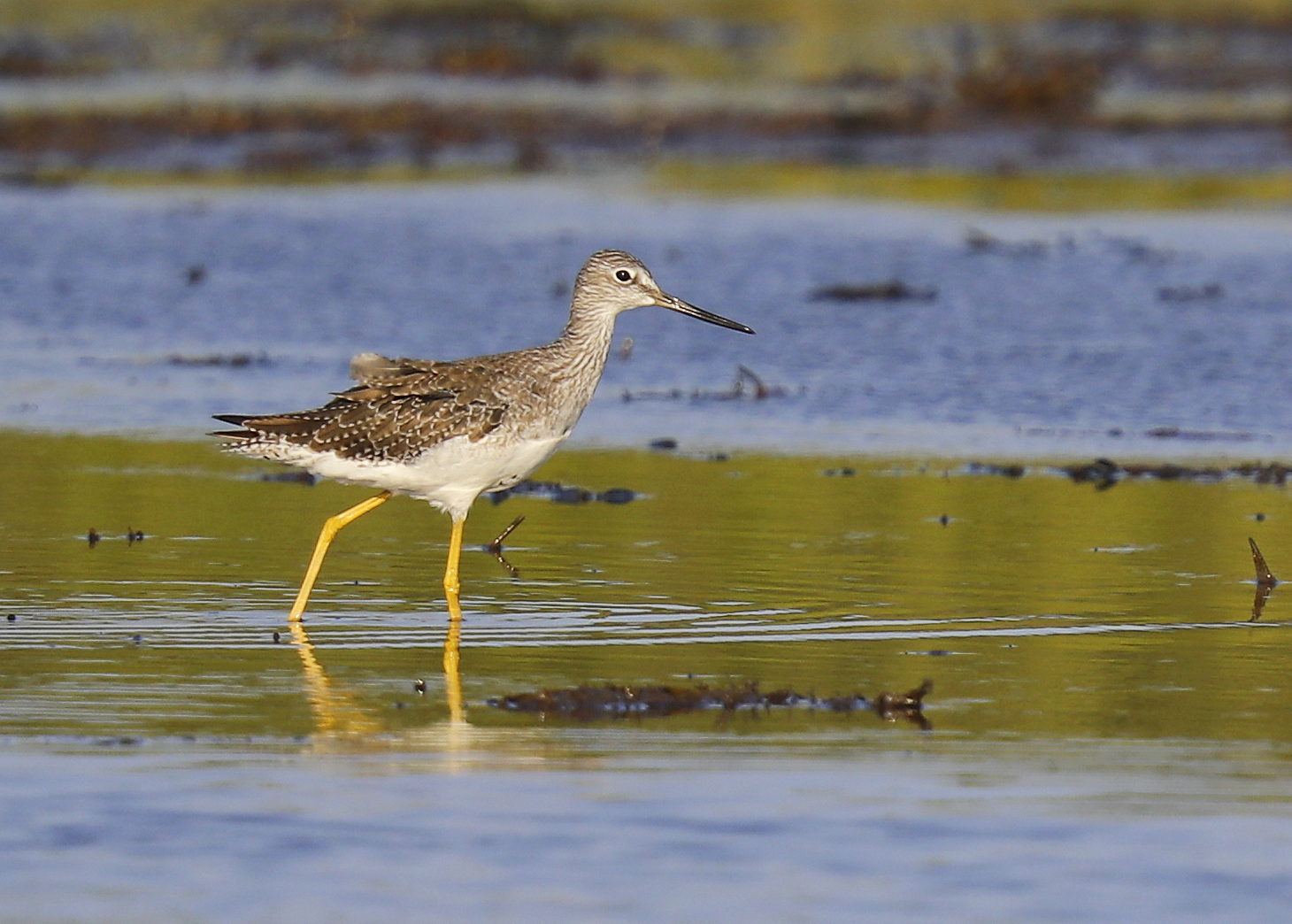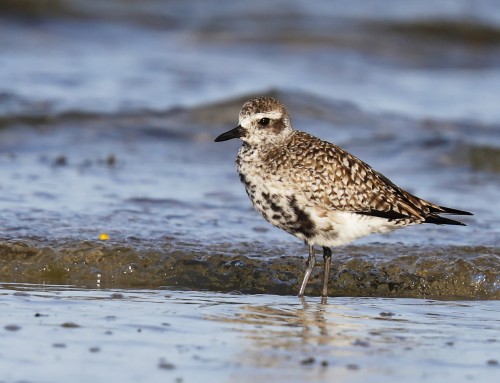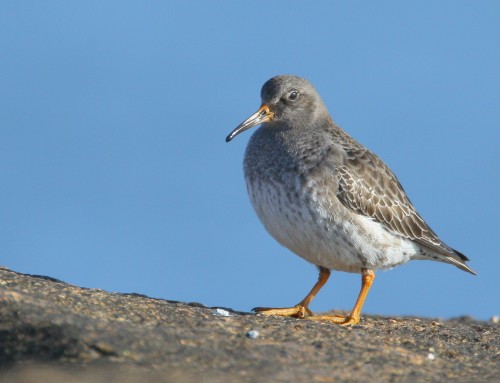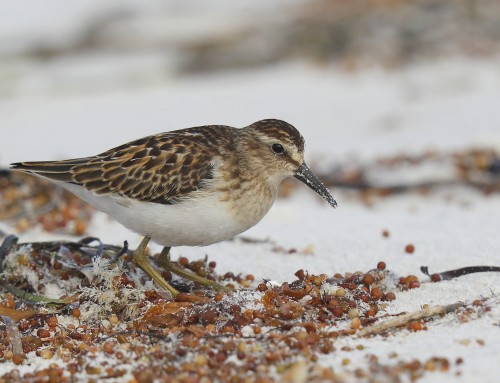Greater Yellowlegs are medium-sized shorebirds that undertake a long and arduous migration along the Atlantic Flyway. During their fall migration, they make several stopover locations to rest and refuel as they travel south. This Yellowlegs was recently seen foraging along Herring Brook by Old Silver Beach.
The Atlantic Flyway is one of the major migratory routes for birds traveling between their breeding grounds in the Arctic and their wintering grounds in the southern United States, the Caribbean, and South America. Here are some of the key stopover locations for Greater Yellowlegs along the Atlantic Flyway during fall migration:
- Breeding Grounds: Before embarking on their southward journey, Greater Yellowlegs breed in wetland and boreal forest habitats in the northern parts of North America, including Canada and Alaska. Here, they raise their young and prepare for their migration.
- Bay of Fundy: This is one of the critical stopover locations for Greater Yellowlegs. The Bay of Fundy, located between New Brunswick and Nova Scotia in Canada, is known for having one of the highest tides in the world. The extensive mudflats and salt marshes in this area provide abundant food resources for shorebirds like Greater Yellowlegs as they fuel up for the next leg of their journey.
- Delaware Bay: Delaware Bay, situated along the eastern coast of the United States, is another important stopover location. The bay is famous for its horseshoe crab spawning events, which provide an essential food source for migrating shorebirds. Greater Yellowlegs gather here to feed on horseshoe crab eggs, which are rich in nutrients.
- Cape May, New Jersey: Cape May is a renowned birding destination along the Atlantic Flyway. It serves as a stopover location for many bird species during migration, including Greater Yellowlegs. The salt marshes and mudflats in the area offer ideal foraging habitats.
- Long Island Sound: This estuary between Long Island, New York, and the mainland serves as a stopover location for a variety of migratory shorebirds, including Greater Yellowlegs. The diverse habitats, including tidal mudflats and salt marshes, provide ample food resources.
- Chesapeake Bay: Chesapeake Bay, the largest estuary in the United States, is another crucial stopover location. The bay and its surrounding marshes are important feeding grounds for Greater Yellowlegs and other shorebirds.
- Georgia and Florida: As Greater Yellowlegs continue their southward journey, they may stop in the coastal wetlands and estuaries of Georgia and Florida. These areas provide additional opportunities for feeding and resting before they reach their wintering grounds.
- Caribbean Islands: Some Greater Yellowlegs may make brief stopovers on Caribbean islands during their migration, particularly in places with suitable wetland habitats.
- South America: Eventually, Greater Yellowlegs reach their wintering grounds in South America, which can vary from northern South America to as far south as Argentina. These wintering areas include coastal estuaries, lagoons, and mudflats.
These stopover locations are crucial for Greater Yellowlegs and other migratory shorebirds to rest, refuel, and build up energy reserves for their long journey. Conservation efforts in these areas are essential to protect the habitats that these birds depend on during their fall migration along the Atlantic Flyway.






Leave A Comment
You must be logged in to post a comment.